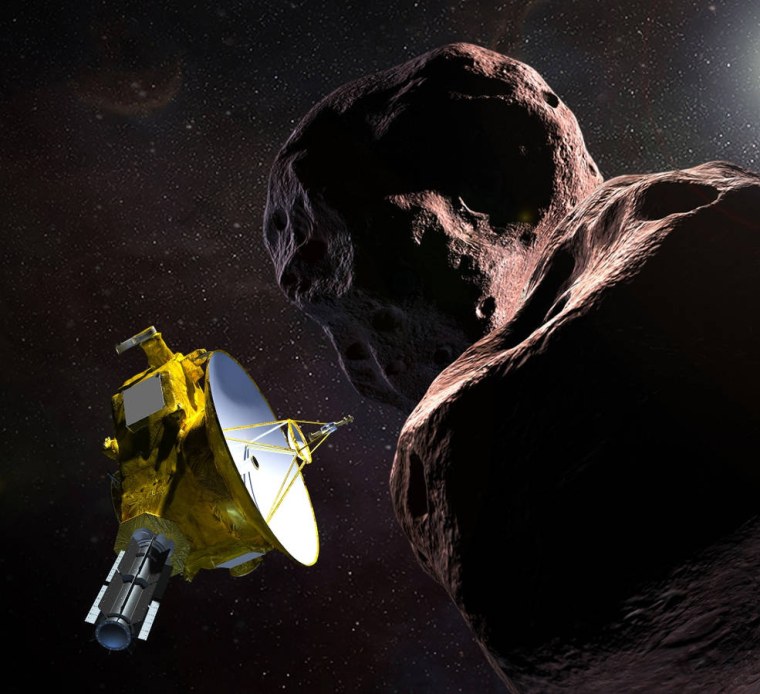As revelers around the world gather to celebrate the start of 2019, a NASA space probe will be ringing in the new year with a meet-up of its own some 4 billion miles from Earth.
The New Horizons probe has been speeding through space for the past 13 years and is now closing in on an object in the Kuiper Belt, a vast region of space beyond Neptune’s orbit that is full of icy bodies and studded with dwarf planets. If all goes according to plan, the probe will fly by the object, Ultima Thule, at 12:33 a.m. Eastern time on Tuesday, Jan. 1.
The flyby, which will be broadcast live on NASA TV beginning at 12:15 a.m. EST on Tuesday, will make Ultima Thule the most distant object ever visited by a spacecraft.
“We’re excited to explore a kind of object that has never been seen before,” Alan Stern, principal investigator for the New Horizons mission, said in advance of the flyby. “Thinking about the scale and magnitude of the exploration we’re conducting, and I would say people are close to climbing the walls with anticipation.”
Ultima Thule, whose official designation is 2014 MU69, is an icy, irregularly shaped body measuring about 20 miles across. It’s thought to be a remnant of the early solar system, a planetary “building block” that's been circling the sun since the system formed 4.6 billion years ago.
Though the flyby will pass in the blink on eye — the nuclear-powered New Horizons probe is speeding along at 32,000 miles an hour — cameras and other instruments aboard the piano-sized spacecraft will be able to photograph and map the object and determine its composition.
New Horizons beamed back its first images of Ultima Thule in August, when it was about 100 million miles away from the object. But seen against the crowded backdrop of stars, the object looked so small and faint that it was hard to tell much about it. That will change as the spacecraft draws near — a prospect that has electrified the astronomy community.
“We know almost nothing about it, so to see a detailed surface map will be exciting,” Jay Pasachoff, a professor of astronomy at Williams College in Williamstown, Massachusetts, who is not involved with the New Horizons mission, told NBC News MACH in an email. “Will there be mountains? Craters? Icy deposits? It is so far from the sun that we expect that its surface has never been modified.”
The flyby comes three-and-a-half years after New Horizons’ last major milestone, a flyby of Pluto and its largest moon, Charon, about 3 billion miles from Earth. Since leaving Pluto in July of 2015, New Horizons has added 1 billion miles to its odometer.
Stern said flying by Ultima Thule will be even more challenging than flying by Pluto — and not just because the spacecraft is three years older and much farther from Earth. “We are rendezvousing with something roughly the size of a city, from a billion miles away, in the dark,” Stern said.
What exactly does Stern expect to learn about Ultima Thule? He’s not saying.
“We have been very careful to not make predictions because we’ve never seen anything like this,” he said of the object. “Pluto surprised us with its level of activity and complexity. Pluto is the size of the United States. Now imagine that [Ultima] is the size of a large city in the United States. This is really our first and only opportunity to see what these things are all about.”
Want more stories about space?
- Saturn's rings are disappearing faster than anyone realized
- NASA's Mars InSight lander snaps its first selfie from the Red Planet
- Scientists discover 'Farout,' the most distant solar system object ever seen



